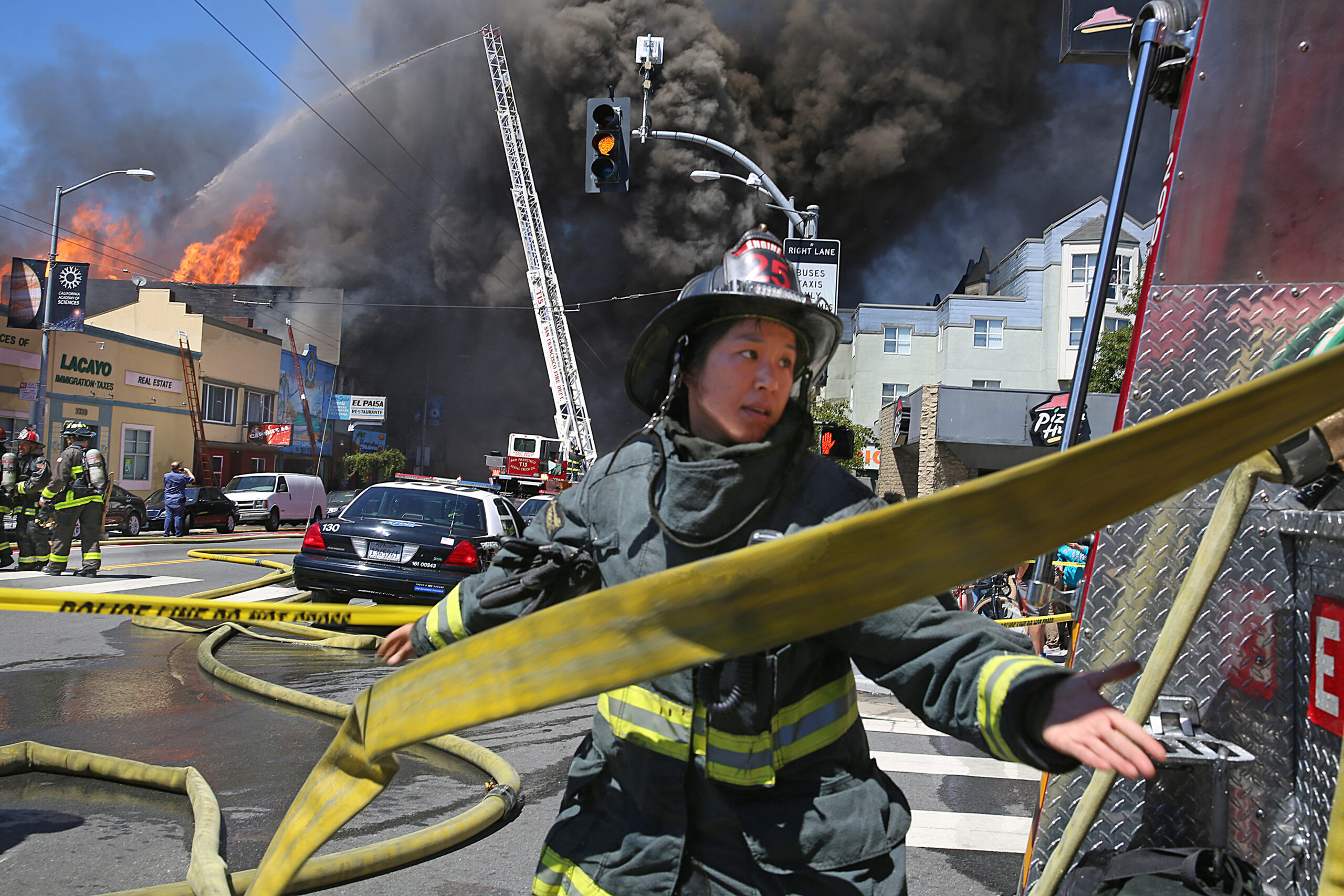San Francisco firefighters fear the “Cancer Sniper.” It’s how they refer to the deadly disease that struck down many of their comrades.
“You kind of expect, in the back of your mind, to get hit,” said fire department Battalion Chief Matthew Alba. “I didn’t expect to get hit at such an early age, but I did.”
Alba was just 43 when doctors discovered he had a cancerous brain tumor, and two years later, he’s still living with the disease.
This morning, the San Francisco Firefighters Cancer Prevention Foundation sponsored a department-wide event to screen members for signs of cancer. The event was spurred by a chronic problem for the San Francisco Fire Department, along with departments across the country: Their members keep getting the deadly disease.
Between April 2018 and November 2022, the foundation documented 68 cancer cases among SF’s firefighters, including 20 cases that struck active members, according to Adam Wood, vice president of the firefighters’ union. Five active firefighters have died of cancer since 2014, Wood said.
Firefighters have a higher risk for all cancers when compared to the general public, especially cancers impacting the respiratory, digestive and urinary systems, studies have shown. They’re constantly surrounded by carcinogens–materials that can cause cancer–and that situation has gotten worse in recent decades.
“What burns these days is very different than what burned 30, 40 years ago,” SFFD Chief Jeanine Nicholson said. “It was wood; it was cotton; it was paper. Now it’s all petroleum-based stuff that’s burning.”
But it’s not just burning buildings that threaten firefighters’ health: Their own equipment can cause cancer. The flame-retardant protective gear firefighters wear contain carcinogens, explained Tony Stefani, president of the cancer prevention foundation. That includes the iconic protective jackets and pants firefighters wear in the line of duty, called turnout gear.
Nicholson said the department has been working to find replacement protective gear for about five years. It’s challenging to find equipment that doesn’t contain cancer-causing chemicals but can still stand up to extreme heat. SFFD has begun issuing new turnouts to address the issue, but they’re less durable and need to be replaced more often, burdening the department with additional costs, Nicholson said.
As a light drizzle broke out at the cancer-screening event, Alba spotted a firefighter wearing a yellow turnout jacket. Alba called out to his colleague and asked him to take it off, reminding him that it’s not a raincoat.
The jacket was one of the old pieces of gear that contains carcinogens–plenty of the old turnouts are still in rotation, Alba explained. He calls them “cancer jackets,” and says it’s been an uphill battle to get firefighters, who are used to casually wearing their protective gear on cold or rainy days, to stow away the jackets until the moment comes to fight a fire.
It’s part of a larger culture shift the department needs to make.
Back when Nicholson was starting out as a firefighter, veterans used to encourage young members to get into the action and get their turnout coats dirty. Firefighters came back from a fire and walked around the living quarters in the station wearing their turnout pants. At night, they often slept next to their protective gear, Nicholson explained.
“It was a badge of honor to have a smudge of soot on your face,” she said.
In the past decade, the department has changed all that. After a fire, members decontaminate their gear using specialized washing equipment and decontaminate their bodies. The new policies, alongside the introduction of more cancer-free gear and regular cancer screening events, are aimed at stopping the cycle of cancer that has plagued the department.
Despite the grim reason for this morning’s gathering, Alba was all smiles. A steady stream of old friends stopped by to shake his hand and pat him on the back. It felt like a long-needed family reunion, he said, and a welcome change of venue compared to where he usually catches up with his old buddies from the department.
“This opportunity is a celebration where we are all getting together, and it's not for a funeral,” Alba said. “I’ve lost count of how many funerals I’ve gone to, and I don’t want to ever go to a funeral again.”
